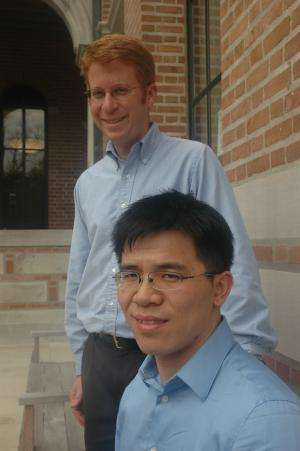Ground-level ozone falling faster than model predicted, study finds

There is good news and better news about ground-level ozone in American cities. While dangerous ozone levels have fallen in places that clamp down on emissions from vehicles and industry, a new study from Rice University suggests that a model widely used to predict the impact of remediation efforts has been too conservative.
Particularly in Northeastern cities, ozone levels dropped even beyond what was anticipated by cutting emissions of nitrogen oxides (NOx) from 2002 to 2006. The study published online by the journal Atmospheric Environment suggests the Community Multiscale Air Quality (CMAQ) model misjudged the reduction in ozone by 20 to 60 percent.
"The models have been underpredicting how much benefit we get from controlling NOx emissions in some instances," said Daniel Cohan, an assistant professor of civil and environmental engineering and an author of the study with Rice graduate student Wei Zhou and Sergey Napelenok, a scientist in the Environmental Protection Agency's Atmospheric Modeling and Analysis Division.
"Following major controls of NOx, ozone has come down more quickly than anticipated," Cohan said. "This is good news. But it also poses a challenge because states rely upon models to predict whether they'll attain ozone standards in the future. If the models have key uncertainties that affect their responsiveness, that can affect the states' control strategies."
Ozone is not emitted directly but instead forms near the ground from precursor emissions of NOx and hydrocarbons. Modeling of this complex chemistry is important to help states comply with federal standards for ozone, which now stand at 75 parts per billion (ppb) and may be tightened by the Obama administration. A recent Rice study showed a positive correlation between high ozone levels and cardiac arrest.
In 2002, the EPA implemented a cap-and-trade program known as the NOx SIP Call to curtail emissions of ozone-forming NOx from industries in Eastern states. The dramatic reduction in emissions over the subsequent four years provided a real-world experiment for the researchers to test how well computer models predict improvements in air quality.
"We found that even when we tried to model things with the best available emissions and the best available meteorology, we still had a gap, especially in the Northeast states, that couldn't be explained," he said.
In the SIP Call regions, the researchers found the simulated drop in ozone was 4.6 ppb, while the observed drop was 8 ppb, a significant difference. Faster-than-expected reductions in NOx emissions may explain some but not all of that gap. The remaining gap may result from inaccuracies in how the model represents the chemistry and transport of air pollutants, Cohan said.
"How ozone responds to changes in NOx and hydrocarbons is a nonlinear chemistry," Cohan said. "So it's certainly possible that even the best models could be slightly inaccurate in defining those relationships. It tells us that, as modelers, we need to revisit the formulations, especially the chemistry."
While it may be preferable for models to be a bit conservative rather than too aggressive in predicting ozone improvements, Cohan said, the models are intended to represent air pollution as accurately as possible. A study by Cohan's research group last year showed that regulatory modeling by states tended to slightly under-predict the ozone reductions that were actually achieved.
"The goal of everyone in the process is to reach attainment in the most cost-effective manner possible, and we need accurate models to inform those decisions," Cohan said.
More information: www.sciencedirect.com/science/ … ii/S1352231013000058
Journal information: Atmospheric Environment
Provided by Rice University

















